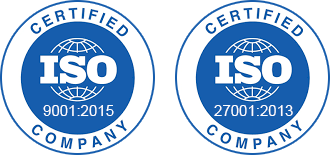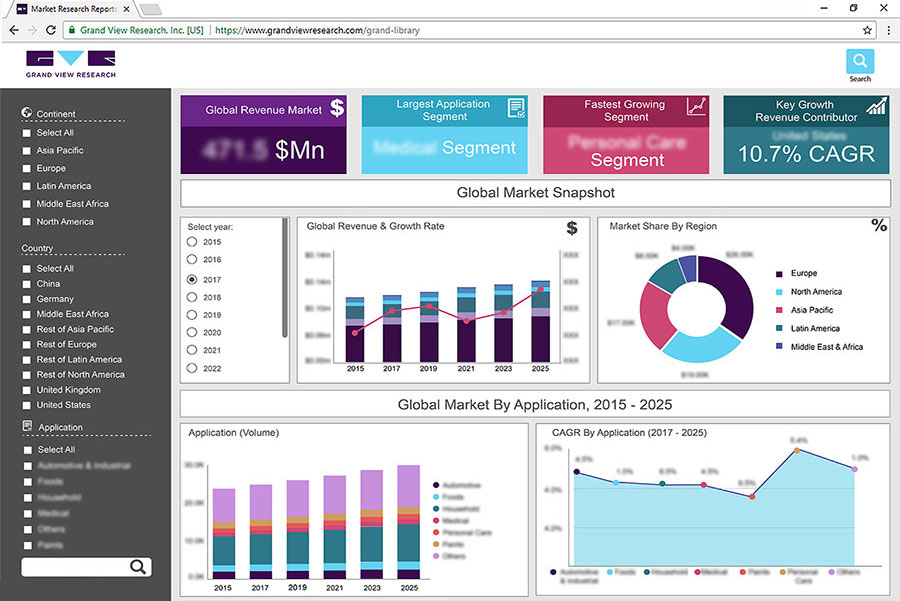
U.S. Gastroenterology Ambulatory Surgery Centers Market Size, Share & Trends Analysis Report By Ownership (Hospital-affiliated, Freestanding, Corporation-owned), And Segment Forecasts, 2024 - 2030
- Report ID: GVR-3-68038-928-9
- Number of Report Pages: 100
- Format: PDF, Horizon Databook
- Historical Range: 2018 - 2022
- Forecast Period: 2024 - 2030
- Industry: Healthcare
Table of Contents
Chapter 1. Methodology and Scope
1.1. Market Segmentation and Scope
1.2. Market Definitions
1.3. Research Methodology
1.3.1. Information Procurement
1.3.2. Information or Data Analysis
1.3.3. Market Formulation & Data Visualization
1.3.4. Data Validation & Publishing
1.4. Research Scope and Assumptions
1.4.1. List of Data Sources
Chapter 2. Executive Summary
2.1. Market Outlook
2.2. Segment Outlook
2.3. Competitive Insights
Chapter 3. U.S. Gastroenterology Ambulatory Surgery Centers Market Variables, Trends, & Scope
3.1. Market Introduction/Lineage Outlook
3.2. Market Size and Growth Prospects (USD Million)
3.3. Market Dynamics
3.3.1. Market Drivers Analysis
3.3.2. Market Restraints Analysis
3.4. U.S. Gastroenterology Ambulatory Surgery Centers Market Analysis Tools
3.4.1. Porter’s Analysis
3.4.1.1. Bargaining power of the suppliers
3.4.1.2. Bargaining power of the buyers
3.4.1.3. Threats of substitution
3.4.1.4. Threats from new entrants
3.4.1.5. Competitive rivalry
3.4.2. PESTEL Analysis
3.4.2.1. Political landscape
3.4.2.2. Economic and Social landscape
3.4.2.3. Technological landscape
3.4.2.4. Environmental landscape
3.4.2.5. Legal landscape
Chapter 4. U.S. Gastroenterology Ambulatory Surgery Centers Market: Ownership Estimates & Trend Analysis
4.1. Segment Dashboard
4.2. U.S. Gastroenterology Ambulatory Surgery Centers Market: Ownership Movement Analysis, 2023 & 2030 (USD Million)
4.3. Hospital-affiliated
4.3.1. Hospital-affiliated Market Revenue Estimates and Forecasts, 2018 - 2030 (USD Million)
4.4. Freestanding
4.4.1. Freestanding Market Revenue Estimates and Forecasts, 2018 - 2030 (USD Million)
4.5. Corporation-owned
4.5.1. Corporation-owned Market Revenue Estimates and Forecasts, 2018 - 2030 (USD Million)
4.6. Others
4.6.1. Others Market Revenue Estimates and Forecasts, 2018 - 2030 (USD Million)
Chapter 5. Competitive Landscape
5.1. Recent Developments & Impact Analysis by Key Market Participants
5.2. Company Categorization
5.3. Company Heat Map Analysis
5.4. Company Profiles
5.4.1. TH Medical.
5.4.1.1. Participant’s Overview
5.4.1.2. Financial Performance
5.4.1.3. Product Benchmarking
5.4.1.4. Recent Developments/ Strategic Initiatives
5.4.2. GE Healthcare
5.4.2.1. Participant’s Overview
5.4.2.2. Financial Performance
5.4.2.3. Product Benchmarking
5.4.2.4. Recent Developments/ Strategic Initiatives
5.4.3. Universal Health Services, Inc.
5.4.3.1. Participant’s Overview
5.4.3.2. Financial Performance
5.4.3.3. Product Benchmarking
5.4.3.4. Recent Developments/ Strategic Initiatives
5.4.4. Covenant Physician Partners
5.4.4.1. Participant’s Overview
5.4.4.2. Financial Performance
5.4.4.3. Product Benchmarking
5.4.4.4. Recent Developments/ Strategic Initiatives
5.4.5. Regent Surgery
5.4.5.1. Participant’s Overview
5.4.5.2. Financial Performance
5.4.5.3. Product Benchmarking
5.4.5.4. Recent Developments/ Strategic Initiatives
5.4.6. Cardinal Health.
5.4.6.1. Participant’s Overview
5.4.6.2. Financial Performance
5.4.6.3. Product Benchmarking
5.4.6.4. Recent Developments/ Strategic Initiatives
5.4.7. Boston Scientific Corporation
5.4.7.1. Participant’s Overview
5.4.7.2. Financial Performance
5.4.7.3. Product Benchmarking
5.4.7.4. Recent Developments/ Strategic Initiatives
5.4.8. Olympus Corporation
5.4.8.1. Participant’s Overview
5.4.8.2. Financial Performance
5.4.8.3. Product Benchmarking
5.4.8.4. Recent Developments/ Strategic Initiatives
5.4.9. Koninklijke Philips NV
5.4.9.1. Participant’s Overview
5.4.9.2. Financial Performance
5.4.9.3. Product Benchmarking
5.4.9.4. Recent Developments/ Strategic Initiatives
5.4.10. Cook Medical
5.4.10.1. Participant’s Overview
5.4.10.2. Financial Performance
5.4.10.3. Product Benchmarking
5.4.10.4. Recent Developments/ Strategic Initiatives



